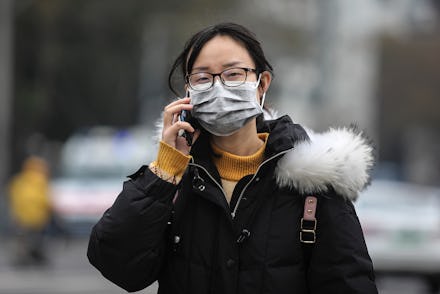China's deadly coronavirus is spreading internationally. How worried should we be?

Six people have died from the mysterious new coronavirus that was first detected in Wuhan, China in late 2018. Out of the 200-300 people projected to have been infected with the virus overall, 77 new cases have been reported in China, Taiwan, Thailand, South Korea, Japan, and now to the US, according to the New York Times. World health authorities are watching carefully as news, and the virus, spreads.
This kind of coronavirus, called NCoV, is most common in non-human animals. Sometimes these viruses are zoonotic — they can be spread from animals to humans — which is what is happening here, according to the CDC. The virus is believed to have originated in a seafood market in Wuhan, where it was first recorded in late 2018. Chinese officials declared Monday that the virus could also be passed from human to human.
“Health authorities in Hong Kong, Singapore, and Tokyo are screening passengers flying in from Wuhan at airports, and the US Centers for Disease Control and Prevention (CDC) is doing so at airports in New York, Los Angeles, and San Francisco,” Business Insider reported. Asian airport authorities are on high alert because this is a busy travel season in China, due to the Lunar New Year on January 25th. Infrared thermometers were installed in train stations, airports, and piers in China on January 14th.
Some public health officials are concerned that the stats from the outbreak have not been accurately assessed by Chinese officials. “The detection of three cases outside China is worrying. There might have been over 1,700 cases in Wuhan so far," Imperial College London's Neil Ferguson, a disease outbreak scientist, told CNN.
The contagiousness of the disease in combination with the busy travel season is a bad combination because it means that the disease could apparently spread very rapidly. The World Health Organization will meet on Wednesday to determine whether to declare this outbreak an epidemic of international concern.
The symptoms of the virus are similar to flu or cold symptoms. It affects the throat, ears, and sinuses. The real problems are that NCoV has not been seen in humans before and is antibiotic resistant, so scientists don’t know how to treat it. This is all complicated by the fact that Chinese authorities are constantly revising the number of those infected, Business Insider reported.
The parallels between NCoV and SARS are not reassuring. Not only do the viruses themselves appear to be similar in symptoms and transmission, but the Chinese government’s response to them feels eerily familiar — they’ve “been slow to acknowledge the severity of the outbreak,” according to the New York Times. The 2003 outbreak of SARS led to 8,000 SARS infections worldwide and almost 800 deaths, so let’s hope either that Chinese authorities are more transparent this time around or that international authorities have gotten more skillful at cutting through all that bureaucratic tape.